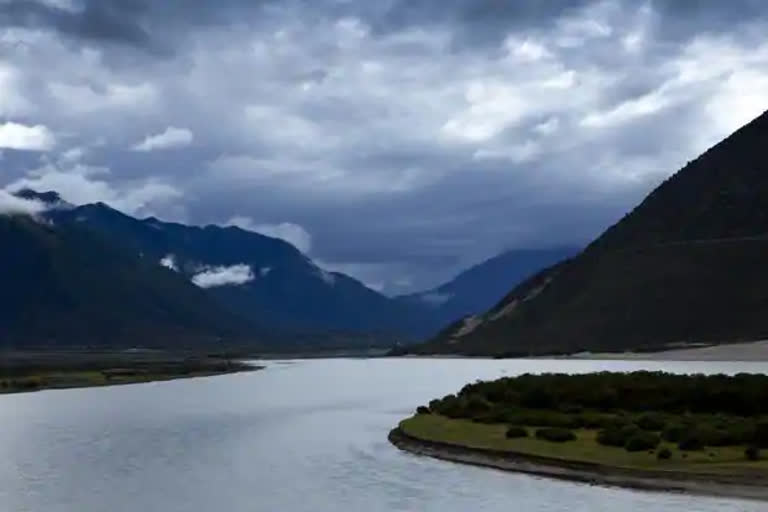Beijing: China will build a major hydropower project on Brahmaputra river in Tibet and a proposal for this has been clearly put forward in the 14th Five-Year Plan to be implemented from next year, the official media on Sunday quoted the head of a Chinese company tasked to build the dam as saying.
Speaking at a conference on Thursday, Yan Zhiyong said the project was put forward in the proposals for formulating the country's 14th Five-Year Plan (2021-25) and its long-term goals through 2035 made by the Central Committee of the ruling Communist Party of China (CPC), it quoted an article on the WeChat account of the Central Committee of the Communist Youth League of China on Sunday.
Read:| China prepping for mission to bring back material from moon
"There is no parallel in history it will be a historic opportunity for the Chinese hydropower industry," Yan told the conference organised to celebrate the 40th anniversary of the founding of the China Society for Hydropower Engineering.
The 14th Five-Year Plan (2021-2025) and National Economic and Social Development and the Long-Range Objectives Through the Year 2035 were adopted by Plenum - a key policy body of the CPC - last month.
Details of the plan were expected to be released after the formal ratification by National People's Congress (NPC) early next year.
Proposals for dams on the Brahmaputra have evoked concerns in India and Bangladesh, the riparian states, and China has downplayed such anxieties saying it would keep their interests in mind.
As a lower riparian State with considerable established user rights to the waters of the trans-border rivers, the Indian government has consistently conveyed its views and concerns to the Chinese authorities and has urged them to ensure that the interests of downstream states are not harmed by any activities in upstream areas.
China has already operationalised the USD 1.5 billion Zam Hydropower Station, the largest in Tibet in 2015.
About the new dam, the Global Times report said that speculation about China planning to build a "super hydropower station" in Medog county, where the Yarlung Zangbo Grand Canyon is located, have circulated for years.
Medog is the last county in Tibet which borders Arunachal Pradesh.
In his address, Yan said that the hydropower exploitation of the Yarlung Zangbo River downstream is more than a hydropower project. It is also meaningful for the environment, national security, living standards, energy and international cooperation.
According to the report, the mainstream of the Yarlung Zangbo River has the richest water resources in Tibet Autonomous Region, about 80 million kilowatt-hours (kWh), while the 50-kilometre section of the Yarlung Zangbo Grand Canyon has 70 million kWh that could be developed with a 2,000-meter drop, which equals more than three Three Gorges power stations in Hubei province.
Tibet has about 200 million kWh of water resources, accounting for 30 per cent of the total in China.
Read:| Taiwan begins construction of first home-built submarine
The 60 million kWh hydropower exploitation at the downstream of the Yarlung Zangbo River could provide 300 billion kWh of clean, renewable and zero-carbon electricity annually. The project will play a significant role in realising China's goal of reaching a carbon emissions peak before 2030 and carbon neutrality in 2060, he said.
"It is a project for national security, including water resources and domestic security," he said, noting that the project will also smooth cooperation with South Asia.
The hydropower station could generate income of 20 billion yuan (USD three billion) annually for the Tibet Autonomous Region, he said.
India and China established the Expert Level Mechanism (ELM) in 2006 to discuss various issues related to trans-border rivers.
Under existing bilateral Memorandums of Understanding, China provides hydrological information of Brahmaputra River and Sutlej River to India during the flood seasons.
Under the arrangement, China provides flood season data of the Brahmaputra river between May 15 and October 15 every year.
PTI



